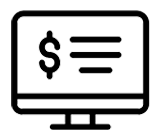By now, we all accept that we have to live greener lifestyles. We do our bit at home; we may even profess our support of Net Carbon on social media.
But how amenable are we when going greener affects the bottom line of our businesses? Are we as open to ecological initiatives then?
EPR compliance is a way to make sure that businesses are responsible to the planet, too. That includes FBA businesses and Amazon aggregators.
If you’re an Amazon seller — FBA or Self-Ship — and sell into Germany or France, EPR is about to take any eco choice from you. EPR, or Extended Producer Responsibility, is now in place to enforce ecological responsibility.
And whether you’re a manufacturer, ‘Producer*’ or seller, it will impact you at some point down the line.
First Europe; next, the world
EPR is, in effect, a product register. Moreover, it’s a register that helps provide an ecological audit trail for products, and, if applicable, some of their components.
Right now, eco-regulations stop with Germany and France. But we should expect continent-wide adoption in Europe, whose willingness to go green seems to eclipse the rest of the world.
Eventually, the globe will catch up. When they do, all Amazon FBA sellers will have to monitor products, their lifecycles and the impact that the whole journey has on the planet.
For many Amazon business owners, this may just be the straw breaking their camel’s back. Let’s have a look at the details in more depth.
Will EPR affect my business?
I know Amazon sellers. I was one. So the first thing you’re going to ask is: what products fall under EPR?
To date, France and Germany have produced quite different EPR lists to monitor. Both include packaging, electric and electronic equipment (EEE) and batteries. The French have included a whole host more.
Amazon France will even suspend non-compliant listings, and recover the cost of your eco-contributions. The full list of items you can view on Amazon’s EPR guidance page.
You might take a look at that list and go, ‘Phew!’ if your product isn’t there. But even if your product contains an EEE battery you have to register it. Even worse, if you’re the producer, you have to register the product and battery separately.
Should I just exclude shipping to EPR countries?
Knowing most sellers, they won’t want to restrict their market by simply cutting off France and Germany. They are, even post-Brexit, two of the UK’s single largest export markets.
Truncating options is an impractical and most unbusiness-like solution. Where would you stop with the wider roll out imminent?
So, it might be worth getting used to the process whilst countries’ lists contain so few limitations. That means getting into bed with these processes from the outset.
*Am I a producer?
Many bigger Amazon sellers will be subject to the ‘producer’ liability. Amongst other definitions, ‘producer’ means you’re first to supply an import product into that country’s marketplace.
That’s what’s going to aggravate innovative Amazon FBA business the most. Isn’t identifying gap-in-the-market opportunities what set you apart from other Amazon businesses?
Now, there’s a whole process to go through if you are the first to list a product in a country running an EPR policy. And, depending on volumes and profit trajectory, it might make you think twice before being that initial supplier.
EPR Producers and Manufacturers aren’t the same thing
Just because you’re the manufacturer doesn’t mean you avoid the EPR process. Likewise, just because you’re not the manufacturer means you escape the policy, either.
You can be considered as a ‘Producer’ if, in an EPR-required country, any of these apply to you:
- you make a product, and/or
- you import a product, and/or
- you sell an EPR product where you are not yet established.
There’s even a separate list, depending on the country, for packaging requirements.
Take it all back
The last, and perhaps most obstructive, barrier to selling to EPR countries is the ‘take back’ service you must offer. In short, if you’re selling an EPR categorised product, you must offer to collect the old ‘like’ product from the customer.
UK-to-UK collection (when it comes in) shouldn’t be too much of a hassle. Carriers are on every High Street, and accessible through Post Offices and convenience stores. But, you’ve still got to build in potential collection fees into your margin.
Now, think about the process of take-back on the continent. Some of the larger products, you may even have to employ a haulier to collect goods from customers’ houses.
My gut tells me that integrating EPR take back fees will make you so uncompetitive, you won’t consciously have to withdraw from a country to kill your sales there.
Green is for stop?
Is EPR also an indirect attempt to cut down on travel emissions for a greener planet? Absolutely it is. You can see it will have a direct impact on willingness to sell to other countries.
But, you have a choice. If you’re already an EPR registered supplier, good on you. You should be displaying that on your storefront so that European buyers can buy in confidence from you. And your margins should accommodate pricey returns costs.
If you’re not registered, you may want to think twice. Prepare your business to write off potential sales in countries upholding EPR compliance.
But how far do you want to extend cutting down your markets? If (when) this policy is adopted worldwide, this tactic may leave you with only the domestic market. Is that enough to support your business?
If now’s the time to bow out of the Amazon Marketplace gracefully, we can help you take the first steps to selling your FBA business.
Further reading:
This website was created by ex-Amazon sellers, Martin Smith and Richard Turnbull.
To learn about our story, our private label FBA brands, and our first-hand experience selling to Amazon aggregators, click here.
You may also wish to check out our 2022 Definitive Guide to Amazon Aggregators.
Written for FBA sellers, this simple, easy to follow document takes less than 5 minutes to read and represents the culmination of over 100 hours of research into the Amazon aggregator space. To access the guide today, click this link.









